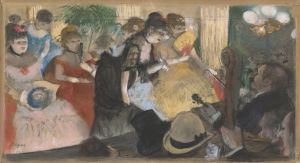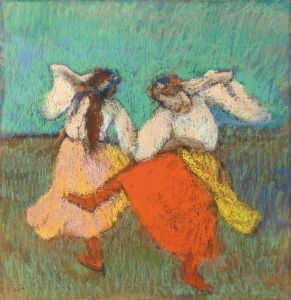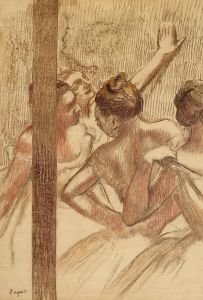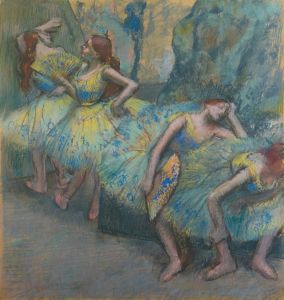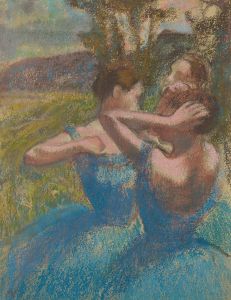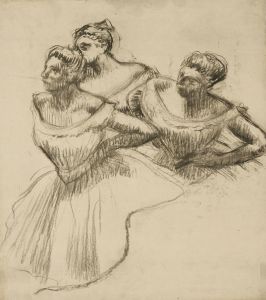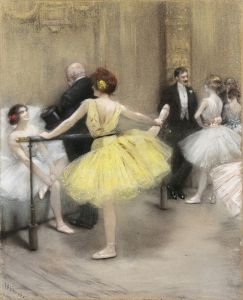
A Group Of Dancers
A hand-painted replica of Edgar Degas’s masterpiece A Group Of Dancers, meticulously crafted by professional artists to capture the true essence of the original. Each piece is created with museum-quality canvas and rare mineral pigments, carefully painted by experienced artists with delicate brushstrokes and rich, layered colors to perfectly recreate the texture of the original artwork. Unlike machine-printed reproductions, this hand-painted version brings the painting to life, infused with the artist’s emotions and skill in every stroke. Whether for personal collection or home decoration, it instantly elevates the artistic atmosphere of any space.
Edgar Degas, a prominent French artist associated with the Impressionist movement, is renowned for his depictions of dancers, capturing the grace and dynamism of ballet. One of his notable works in this genre is "A Group of Dancers," a painting that exemplifies his fascination with movement and the human form. Created in the late 19th century, this artwork is a testament to Degas's innovative approach to composition and his keen observational skills.
"A Group of Dancers" portrays a scene from the world of ballet, a subject Degas frequently explored throughout his career. The painting captures a moment of rehearsal or preparation, a theme that Degas often preferred over the more polished performances. This choice reflects his interest in the behind-the-scenes aspects of ballet, offering a glimpse into the rigorous discipline and practice that underpin the art form.
Degas's technique in "A Group of Dancers" is characterized by his use of pastels, a medium he mastered and used extensively in his later works. The soft, powdery texture of pastels allowed Degas to create delicate, nuanced representations of light and movement. In this painting, the dancers are depicted with a sense of fluidity and spontaneity, their forms rendered with a combination of precise lines and soft, blended colors. This approach not only highlights the physicality of the dancers but also conveys the ephemeral nature of their movements.
The composition of "A Group of Dancers" is notable for its unconventional framing and perspective. Degas often employed unusual angles and cropped compositions, drawing inspiration from photography and Japanese prints. In this painting, the dancers are arranged in a way that suggests a snapshot of a larger scene, with some figures partially obscured or cut off by the edges of the canvas. This technique creates a sense of immediacy and intimacy, inviting the viewer to feel as though they are part of the scene.
Degas's interest in dancers was not merely aesthetic; it also reflected his broader exploration of modern life and the human condition. Ballet, with its combination of beauty and discipline, served as a microcosm of the contemporary world, embodying themes of labor, performance, and the pursuit of perfection. Through works like "A Group of Dancers," Degas captured the dualities inherent in the life of a dancer—the grace and the toil, the public spectacle and the private struggle.
While "A Group of Dancers" is celebrated for its artistic merits, it also provides insight into the cultural milieu of 19th-century Paris. Ballet was a popular and prestigious art form during this period, and Degas's paintings contributed to the romanticized image of the ballet dancer that persists to this day. His works offer a window into the world of the Paris Opéra Ballet, one of the leading institutions of the time, and reflect the societal fascination with dance as both an art and a spectacle.
In summary, Edgar Degas's "A Group of Dancers" is a masterful representation of his enduring interest in the world of ballet. Through his innovative use of pastels, unique compositional choices, and insightful portrayal of dancers, Degas created a work that continues to resonate with audiences, offering both aesthetic pleasure and a deeper understanding of the cultural and social dynamics of his era.





